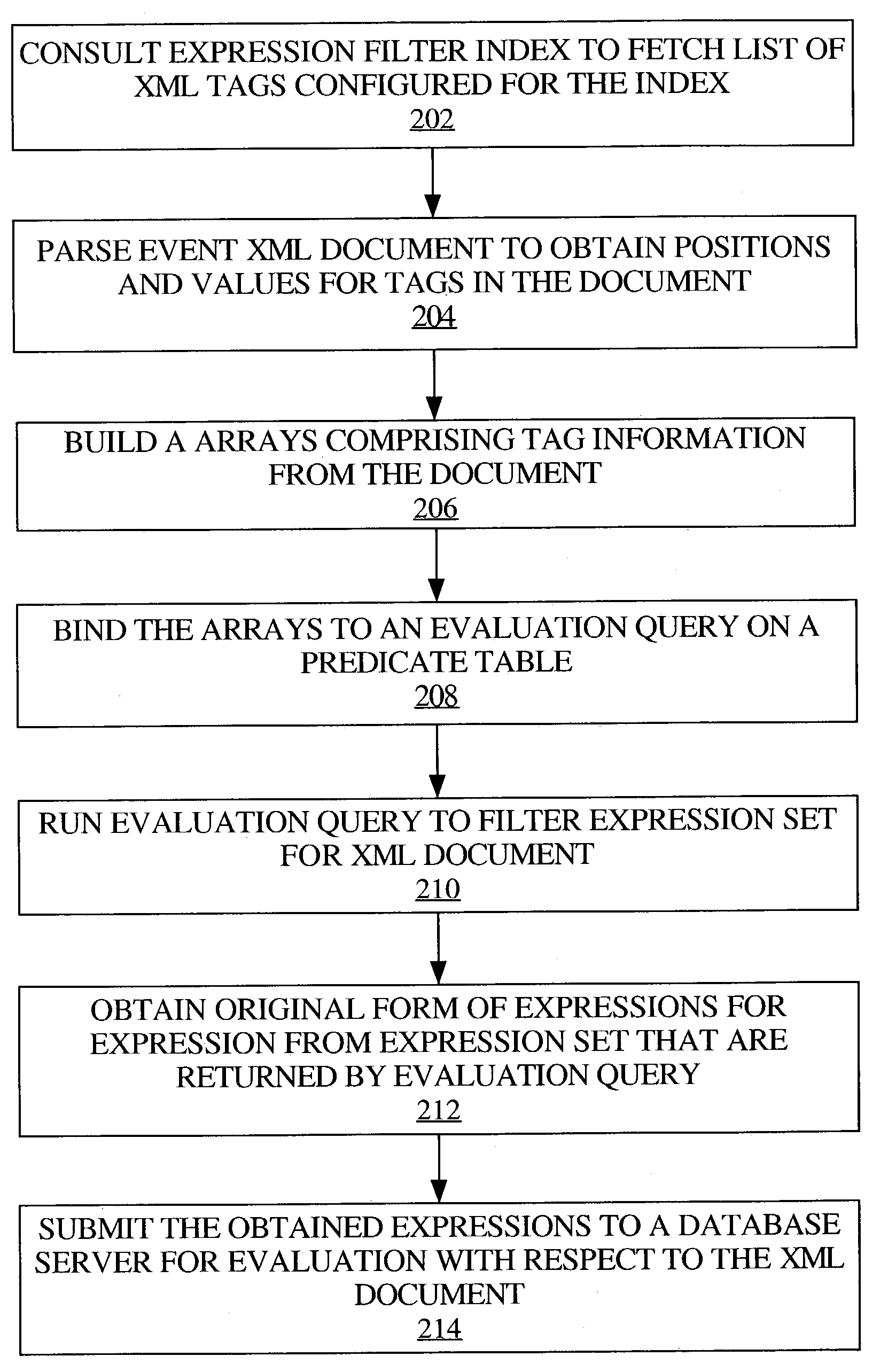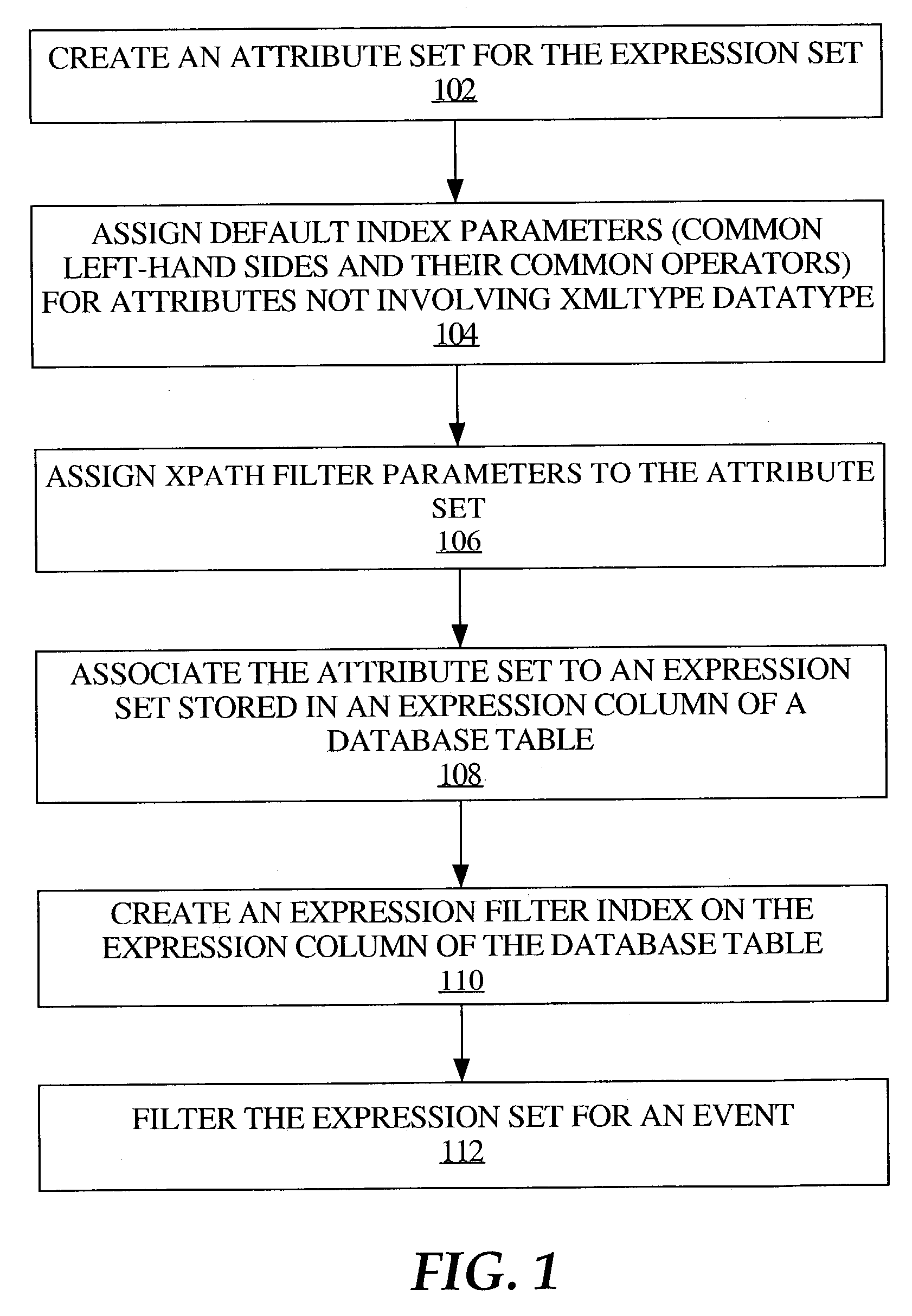Managing XPath expressions in a database system
a database system and conditional expression technology, applied in the field of database management systems, can solve the problems of not being scalable for a large set of expressions nor a high rate of events, expressions and related information require significant custom coding, and the approach is simple but inefficien
- Summary
- Abstract
- Description
- Claims
- Application Information
AI Technical Summary
Problems solved by technology
Method used
Image
Examples
Embodiment Construction
[0021]A method and system are described for managing expressions in a database system. In addition, and more specifically, methods and systems are described for managing XPath expressions in a database system.
[0022]In the following description, for the purposes of explanation, numerous specific details are set forth in order to provide a thorough understanding of the present invention. It will be apparent, however, that the present invention may be practiced without these specific details. In other instances, well-known structures and devices are shown in block diagram form in order to avoid unnecessarily obscuring the present invention.
Overview
[0023]Conditional expressions on hierarchically structured information are often presented in a path format in which an element of interest within the information is identified, and a value of interest associated with an attribute of the element is identified. Such expressions can be applied to the hierarchical information to determine whethe...
PUM
 Login to View More
Login to View More Abstract
Description
Claims
Application Information
 Login to View More
Login to View More - R&D
- Intellectual Property
- Life Sciences
- Materials
- Tech Scout
- Unparalleled Data Quality
- Higher Quality Content
- 60% Fewer Hallucinations
Browse by: Latest US Patents, China's latest patents, Technical Efficacy Thesaurus, Application Domain, Technology Topic, Popular Technical Reports.
© 2025 PatSnap. All rights reserved.Legal|Privacy policy|Modern Slavery Act Transparency Statement|Sitemap|About US| Contact US: help@patsnap.com



